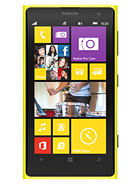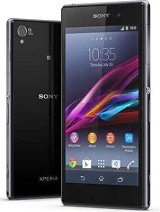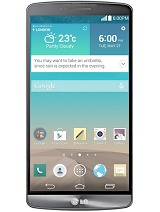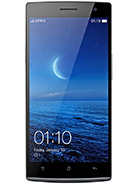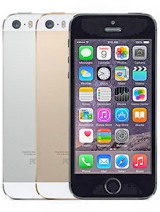Camera shootout: Six enter, only one leaves
Six enter, only one leaves
Camera specs and features
Camera makers mostly promote their new software features as they are flashier, but a good hardware lays the foundation of a solid camera. Here's a quick overview of the hardware features behind each of our six contenders.
| Resolution | 16MP | 13MP | 8MP / 20.7MP | 13MP | 5MP / 38MP | 8MP |
| Aperture | f/2.2 | f/2.4 | f/2.0 | f/2.0 | f/2.2 | f/2.2 |
| Sensor size | 1/2.5" | 1/3" | 1/2.3" | 1/3" | 1/1.5" | 1/3" |
| Flash | LED | dual-LED | LED | dual-LED | LED + xenon | dual-LED |
| Stabilization | Digital | Optical | Digital | Ditital | Optical | Digital |
| Lossless digital zoom | No | No | No | No | Up to 3x | No |
| Front camera | 2MP | 2.1MP | 2.2MP | 5MP | 1.2MP | 1.2MP |
| Shutter key | Volume rocker | Volume rocker | Yes | Volume rocker | Yes | Volume rocker |
| HDR | Yes (auto) | Yes (auto) | Yes (8MP only) | Yes | No | Yes (auto) |
| Other | Phase detection AF, Refocus, Virtual tour | OIS, laser focus, refocus | Refocus, Clear Image Zoom | 50MP mode, slow shutter, RAW image capture | OIS, lossless digital zoom manual controls, refocus, RAW image capture | AE+AF lock |
Nokia Lumia 1020
The Nokia Lumia 1020 is the most photography-oriented phone of the six. It has by far the largest sensor and it's covered by the most pixels. This allows it to offer lossless digital zoom when shooting photos at 5MP or videos.
The PureView camera also boasts optical image stabilization and a xenon flash (in addition to an LED used as AF and video light). The software has a full set of manual controls and an option to shoot in RAW to please photography buffs. Also, the hybrid sensor of the 1020 is just as comfortable shooting 4:3 photos as 16:9.
The Lumia 1020 can also capture RAW files for the photo enthusiasts.
The problem with the Lumia 1020 is that it takes forever - that's 5-6 seconds in tech terms - to save a photo after you hit the shutter key.
Sony Xperia Z2
The Sony Xperia Z2 has the second-biggest sensor here and about half as many pixels as the Lumia (working the numbers reveals those pixels are slightly smaller). There are no advanced features like xenon or OIS but the Sony flagship is water-resistant so you can take it shooting in the pool or at the beach.
Clear Image Zoom promises quality digital zoom right in the camera, but testing showed it's not as good as the Nokia's zoom.
Samsung Galaxy S5
Samsung created its own sensor for the Galaxy S5 based on a technology called ISOCELL. It promises better low-light performance and wider dynamic range. It has a 16:9 aspect ratio and measures 1/2.5". As usual, Samsung has piled a lot of features, but the actual camera UI has been simplified since the Galaxy S4.
The Galaxy S5 boasts Phase Detection Autofocus to acquire very fast focus locks.
LG G3
The LG G3 uses an old-school 4:3 13MP sensor but it one-ups the Galaxy S5 by adding a special invisible autofocus assist light - they call it Laser focus. It uses a dedicated IR light emitter so that it can get accurate distance reading more quickly in the dark. The other two methods - Phase detection and Contrast detection - are still here.
The LG G3 camera features optical image stabilization, the only Android of the 2014 generation that does. It has a dual-tone, dual-LED flash to help it in the dark. The front-camera can use the screen as a sort of flash to take selfies in the dark.
Oppo Find 7
The Oppo Find 7 has a 13MP shooter too but with a wider aperture than the LG (though no OIS). A special software mode allows it to interpolate 50MP shots by stacking several identical shots and picking up the best rendered areas from each. It can even be used as a sort of digital zoom. The front-facing camera is a 5MP snapper promising the best selfies of the six contenders.
The Oppo also allows the capture of RAW files. A mode that works much better is the Slow shutter that can stretch shutter time to 32s to create cool light streak effects in the dark.
Apple iPhone 5s
The Apple iPhone 5s has the lowest resolution camera of the six but with relatively big pixels. It also pioneered the dual-tone, dual-LED flash, which allows for more natural looking flash shots.
A particular strength of the iPhone is the Panorama mode, which uses HDR to balance the very bright and very dark areas a wide panorama usually covers.
The Androids have panorama modes of their own, typically a custom implementation by their maker. The Samsung Galaxy S5 also shoots spherical panoramas and Virtual tours - like a spherical panorama but you're not limited to one location. The Lumia has a Panorama mode too but it's particularly difficult to use, more on that later.
A feature that has recently become trendy is the ability to adjust the focus of an image after it has been taken. Nokia put out such a feature first, but now Samsung and Sony have their own implementations and Google released it for all Androids.
The Nokia and Samsung implementations have an "all in focus" option, while Sony's just does background defocus.
Reader comments
- Allee
- 20 Dec 2020
- PAm
Iphone’s 12MP camera is far better than least oppo f17 pro’s 48MP lol. Just check by yourself.
- anastmet
- 19 Dec 2015
- xyK
wow awesome review! so much detail in every aspect finally i made my decision! thank you very much
- juls
- 29 Nov 2015
- t7V
try now, they have updated the 5s into iOS 9.1 , i saw in youtube there's an incredible difference between the previous OS in terms of camera.
